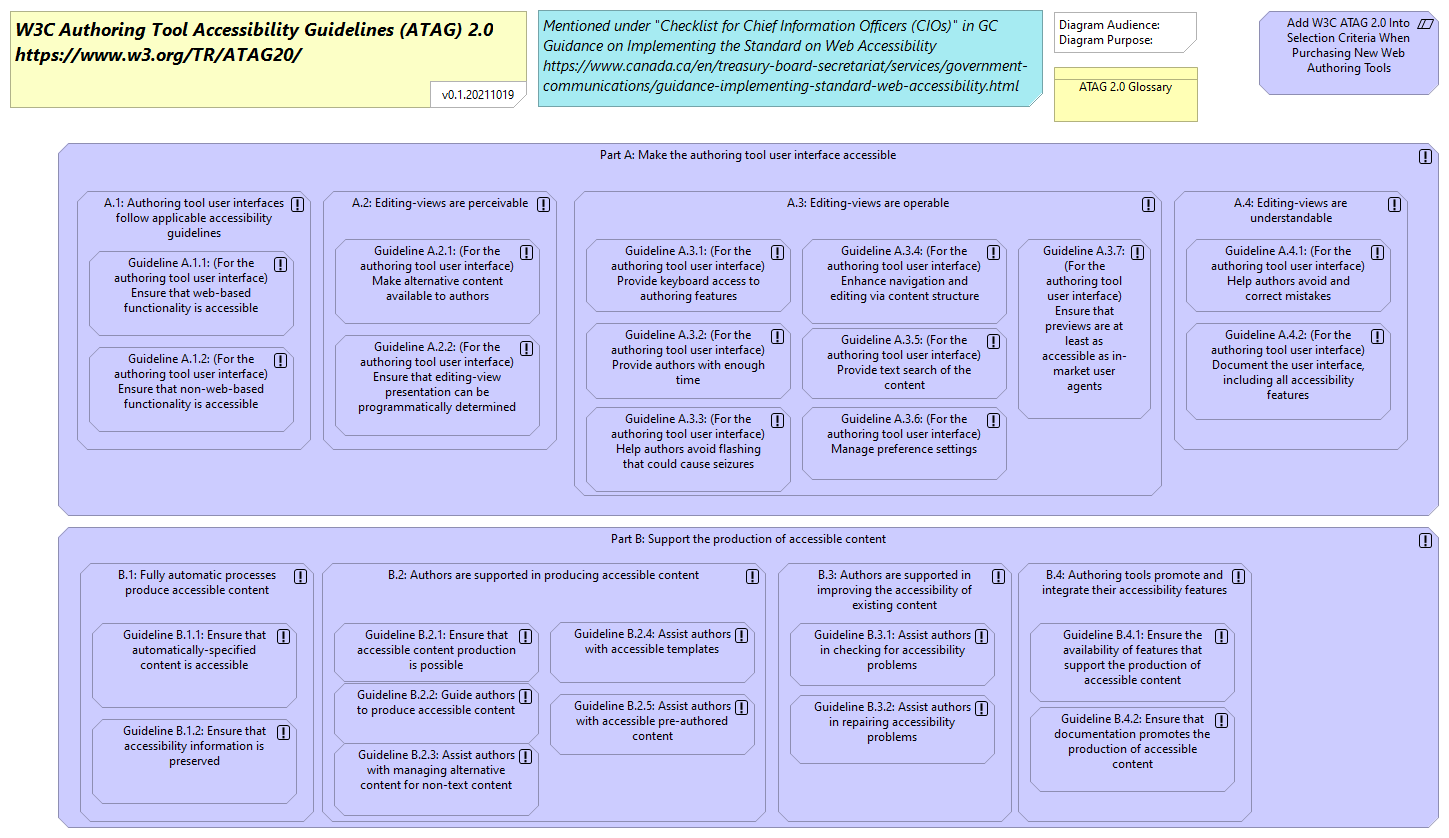
https://www.canada.ca/en/treasury-board-secretariat/services/government-communications/guidance-implementing-standard-web-accessibility.html
Checklist for Chief Information Officers (CIOs)
In implementing the Standard on Web Accessibility, have you:
- Integrated Web accessibility considerations into the development of IM/IT plans?
- Ensured that the department's software and systems provide the functionality necessary to meet the requirements of the Standard on Web Accessibility?
- Incorporated Web accessibility into the business requirements when developing new or updating existing websites and Web applications?
- Incorporated the use of Web metrics and identified how they will be used during the implementation of the Standard on Web Accessibility?
- Ensured ongoing content review and management of redundant, outdated and trivial (ROT) content?
- Ensured that Web pages are archived, where possible, online or offline in accordance with the definition of "archived" in this document and with the Secretariat's policies on information management?
- Ensured that websites and Web applications under the responsibility of the CIO conform to the Standard on Web Accessibility?
- ***** Added the World Wide Web Consortium's draft Authoring Tool Accessibility Guidelines (ATAG) 2.0 into selection criteria when purchasing new Web authoring tools?
- Supported the SDO by ensuring that your staff have the knowledge and expertise necessary to comply with the Standard on Web Accessibility?